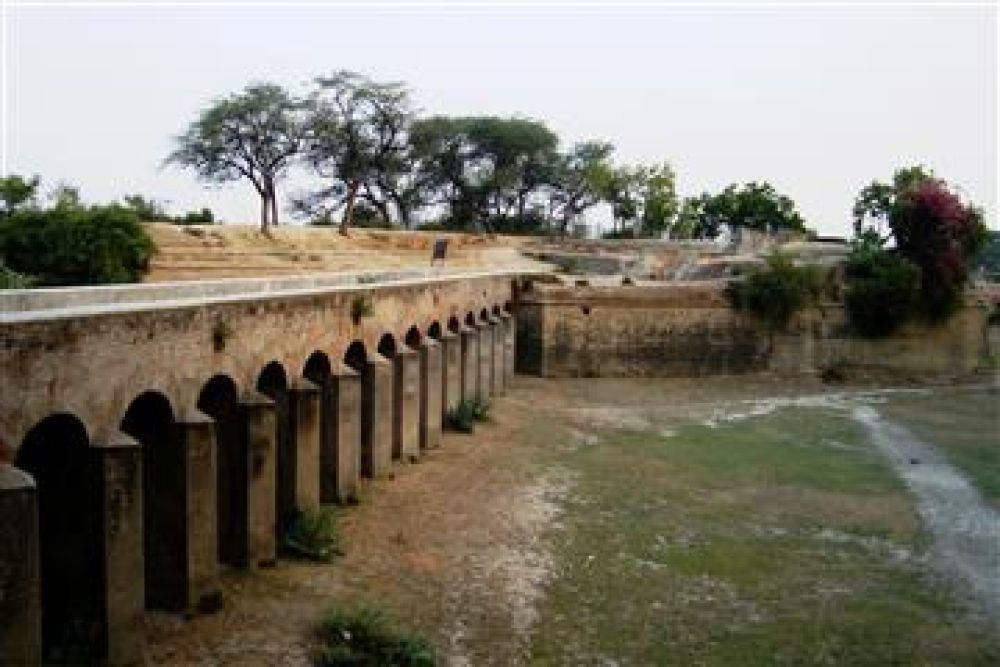

The Aligarh Fort, also known as Aligarh Qila, holds a significant place in the rich tapestry of Indian history. Situated in the bustling city of Aligarh, Uttar Pradesh, it is one of the fortresses that stands testament to the region's historical and cultural prominence.
Built during the time of Ibrahim Lodi of the Lodi dynasty in the 16th century, the Aligarh Fort has witnessed various episodes that shaped the destiny of the Indian subcontinent. It was later under the rule of the Marathas, the Jats, and eventually the British, making it a historical melting pot.
The fort's blend of architectural designs is evident from its robust structure of red sandstone and the Islamic style of arched halls and intricate carvings that draws historians and architecture enthusiasts alike. In the 18th century, it was renovated by the French under Madhavrao I Scindia's rule, providing it with a unique mix of Indian and European military features.
As a tourist spot, Aligarh Fort garnered much interest post-independence with historians and tourists flocking to witness this piece of history. Facilitated with continuous archaeological and preservation efforts, the fort remains an important cultural landmark in Aligarh. Educational tours are common due to the nearby location of the prestigious Aligarh Muslim University.
Tourist footfall increased as awareness grew, aided by improvements in regional infrastructure and connectivity. The Uttar Pradesh government's initiatives to promote cultural sites included Aligarh Fort, thereby increasing its accessibility and visitor facilities over the years.
In recent years, tourism trends indicate the growing interest in offbeat and historical destinations. People are now more inclined towards immersive experiences, and places like Aligarh Fort provide rich historical narratives that satiate this desire.
Additionally, with the rise of digital platforms and social media, tourist spots like Aligarh Fort receive more attention as visitors share their experiences online, creating a virtuous cycle of awareness and curiosity.
Eco-tourism and sustainable travel have also begun to shape the landscape of tourism in historical sites. Initiatives to keep the environs of such places clean and green are increasingly becoming part of the appeal for modern travelers.
Due to its location within a bustling city and near a major academic institution, the Aligarh Fort has merged tourism with education, attracting academics and students who contribute to the ongoing research and preservation of this historical edifice.
With these enriching factors, the Aligarh Fort stands not only as a remnant of past empires but also as a beacon for tourism, narrating its stories to those who seek a glimpse into India’s layered past.